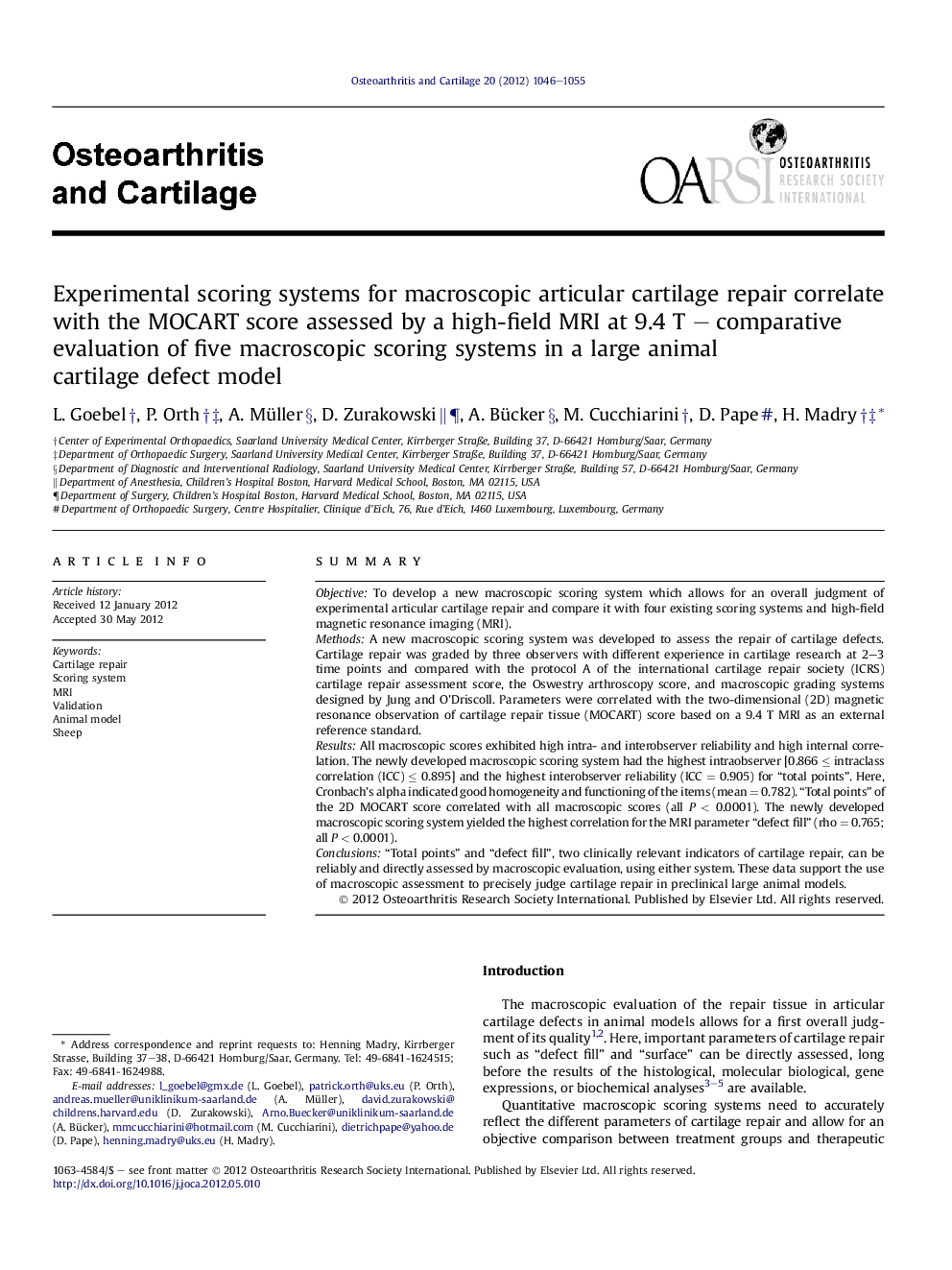| کد مقاله | کد نشریه | سال انتشار | مقاله انگلیسی | نسخه تمام متن |
|---|---|---|---|---|
| 3379864 | 1220184 | 2012 | 10 صفحه PDF | دانلود رایگان |

SummaryObjectiveTo develop a new macroscopic scoring system which allows for an overall judgment of experimental articular cartilage repair and compare it with four existing scoring systems and high-field magnetic resonance imaging (MRI).MethodsA new macroscopic scoring system was developed to assess the repair of cartilage defects. Cartilage repair was graded by three observers with different experience in cartilage research at 2–3 time points and compared with the protocol A of the international cartilage repair society (ICRS) cartilage repair assessment score, the Oswestry arthroscopy score, and macroscopic grading systems designed by Jung and O'Driscoll. Parameters were correlated with the two-dimensional (2D) magnetic resonance observation of cartilage repair tissue (MOCART) score based on a 9.4 T MRI as an external reference standard.ResultsAll macroscopic scores exhibited high intra- and interobserver reliability and high internal correlation. The newly developed macroscopic scoring system had the highest intraobserver [0.866 ≤ intraclass correlation (ICC) ≤ 0.895] and the highest interobserver reliability (ICC = 0.905) for “total points”. Here, Cronbach's alpha indicated good homogeneity and functioning of the items (mean = 0.782). “Total points” of the 2D MOCART score correlated with all macroscopic scores (all P < 0.0001). The newly developed macroscopic scoring system yielded the highest correlation for the MRI parameter “defect fill” (rho = 0.765; all P < 0.0001).Conclusions“Total points” and “defect fill”, two clinically relevant indicators of cartilage repair, can be reliably and directly assessed by macroscopic evaluation, using either system. These data support the use of macroscopic assessment to precisely judge cartilage repair in preclinical large animal models.
Journal: Osteoarthritis and Cartilage - Volume 20, Issue 9, September 2012, Pages 1046–1055